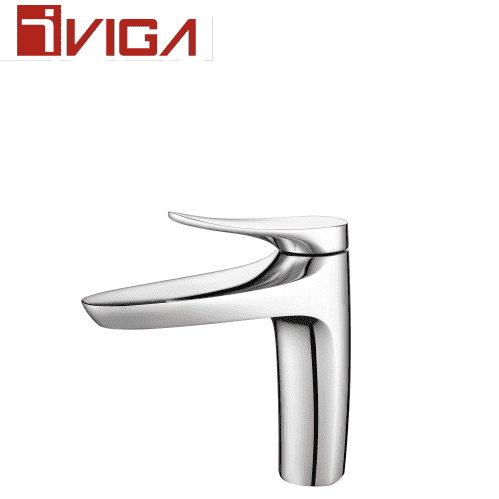Material of faucet: Hadda, the material of faucet on the market is probably cast iron, titanium alloy, zinc daawaha, copper chrome plating, stainless steel chrome plating, aluminum alloy chrome plating, iron chrome plating, plastic, ceramics and other materials.
1.Iron faucet
Iron faucets are prone to rust and difficult to replace and disassemble, just like magnets. Guud ahaan, there are some small faucets, the surface is more difficult to handle, and the appearance is relatively rough; the large hot and cold faucets use less iron and are more difficult to process; iron faucets have gradually been eliminated.
2.Zinc alloy faucet
The zinc alloy faucet is harmful to the human body. The shell is easily corroded and broken after being impacted by water, and the surface is white after being ground open. Hadda, it is generally made by sand casting and machine die casting, and the interior is smooth and flat.
3.Brass faucet
The interior of brass is relatively rough. You can observe the inside of the faucet, and you can see the brass color inconspicuously. There is no problem. Hadda, brass is the most suitable material for faucets.
4.Ceramic faucet
Compared with other materials, the ceramic faucet has the advantages of no rust, no oxidation, and no abrasion, iwm. The appearance is generous, which sets off the high-end atmosphere of the entire space.
5.Stainless steel faucet
The stainless steel faucet does not contain lead, acid and alkali resistance, and is not easy to corrode. Its hardness and toughness are more than twice that of copper faucets, but its hardness, toughness, and cutting are more difficult and costly than copper faucets.
Among the above faucet materials, cast iron faucets have been gradually phased out, and all-plastic faucets are mostly used in special fields; now, the most common faucet materials for household use are mainly copper, alloy, ceramic, bir aan lahayn, iwm. Among these commonly used faucet materials, alloy faucets are harmful to human health; although ceramic and stainless steel faucets have their own advantages, they are expensive, require high processing technology, and have a small number of product types, which have not yet been universally used. Copper faucets rely on their excellent cost performance. Occupy the dominant position of the faucet material market, is a unique stand out in household faucets.
What kind of faucet is better?
Hadda, brass faucets are very good, because brass is not easy to corrode, and has a good antibacterial effect. It can kill 99% of bacteria in tap water. Even if the tap bursts, causing foreign objects to enter, there is no need to worry about bacteria. Infection, its metal cutting performance is also very good, easy to process, reducing production costs, and its service life is long. Si kastaba ha ahaatee, some friends may think that brass faucets contain lead, which is harmful to the human body. But what I want to tell you here is that the amount of lead in brass faucets is actually far less than the lead content of highway exhaust gas. It is likely that you will suffer from blood lead disease when you stay on the road for one year. It is impossible to achieve this level, and the lead content in general brass faucets is very small, so everyone can use it with confidence.
In addition to brass faucets, ceramic faucets are also relatively good compared to other materials. It will not rust, nor will it be oxidized and worn. Its appearance looks stylish and generous, because its shell is also made of ceramics. It can be matched with bathroom products to make ceramics look more artistic and set off the high-end temperament of the bathroom. But the bad thing is that you must be careful when using ceramic faucets, otherwise it will break easily. And its cost is relatively high, so the price of ceramic faucets on the market is relatively expensive.

 IVIGA Tap Supplier Warshada
IVIGA Tap Supplier Warshada
